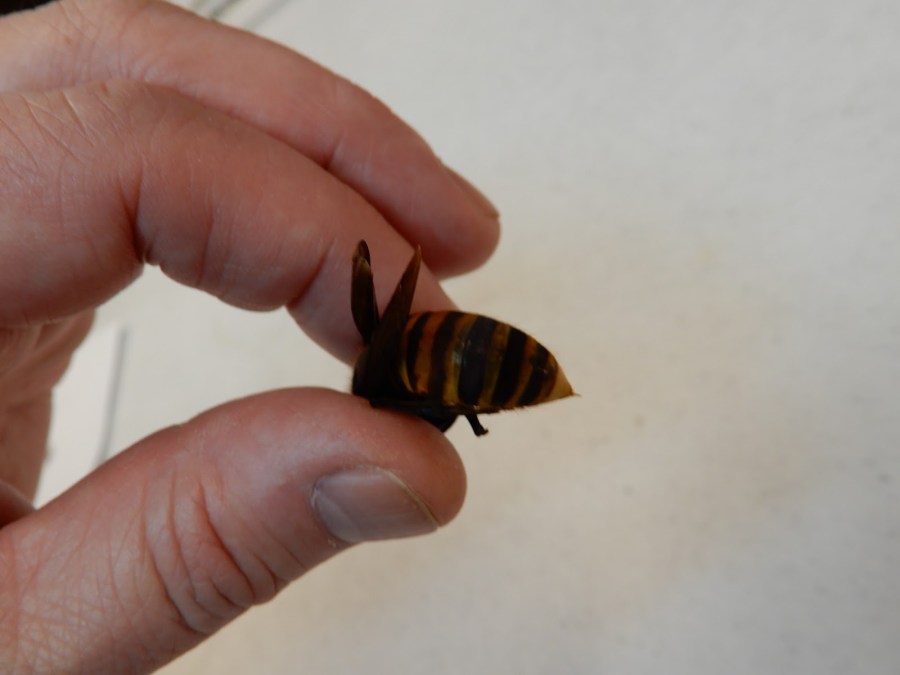PORTLAND, Ore. (KOIN) — The Internet is buzzing over Asian giant hornets reaching the United States “for the first time.” The headlines are a bit misleading, though. The Washington State Department of Agriculture (WSDA) has been warning people about the bugs for half a year.
The WSDA said someone found a dead, “unusually large” hornet on December 8, 2019, in Blaine, near the Canadian border. The person also reported seeing a second, live hornet at a hummingbird feeder “before it retreated into a nearby forest,” according to the WSDA. Entomologists identified the dead insect as an Asian giant hornet, an invasive species with a “voracious appetite” for honeybees and a sting toxic enough to be fatal in group attacks—hence the nickname “murder hornet.”
That was the first confirmed report in the United States, but in August, Canadian officials reported several of the insects being found in British Columbia. In September, a nest containing an estimated 150 giant hornets was found and destroyed.
So why are the hornets just now capturing worldwide attention?
The term “murder hornet” took off on Twitter over the weekend, after a New York Times story examining the discovery in Blaine, and the effort to stop the species from decimating honeybee populations.
According to the WSDA, the hornets may leave “piles of dead bees, most of them headless, outside their beehive…”

Washington health officials have been warning people in the northwest part of the state to be on the lookout and avoid the hornets, which are typically an inch and half long with large light-orange heads.
The species isn’t usually interested in humans or animals but may sting if they or their nests are disturbed or threatened. If stung, the DOH advises thoroughly washing the sting site with soap and water and then apply ice to reduce swelling. Anti-inch cream is also recommended, however if you experience a more severe reaction to the sting, seek medical help immediately.
According to the WSDA, the hornets nest on the ground and are typically dormant through winter. They are most commonly spotted between the months of July through October.

In April, WSDA released tips on how to trap the hornets to help with eradication. It’s quite a commitment, though. Traps need to be hand made, logged on an online mapping system, checked weekly for at least 17 weeks through the summer and fall, and any collected specimens need to be mailed to WSDA. The agency is specifically looking for participants in Whatcom, Skagit, Island, San Juan, Jefferson, and Clallam counties.
If you live in that part of Washington and want to help, you can find instructions here.
And again, if you find an Asian giant hornet nest, do NOT try to remove it. Stay far away and call wildlife officials.
